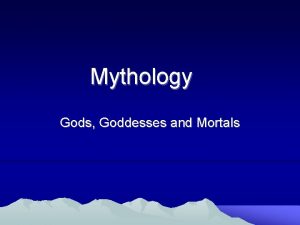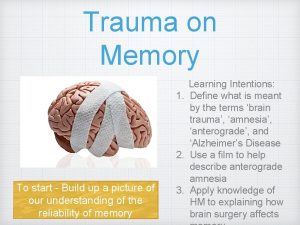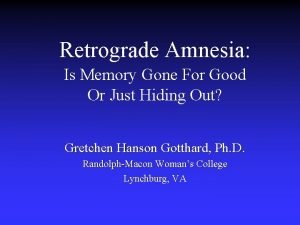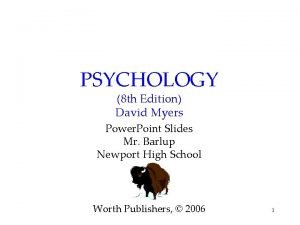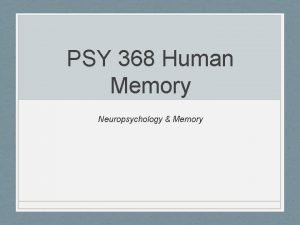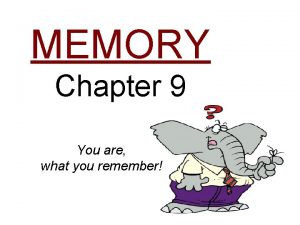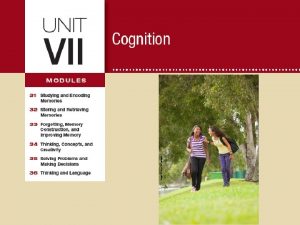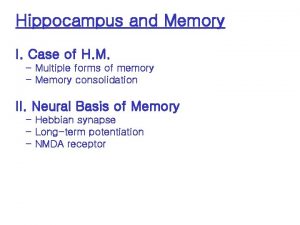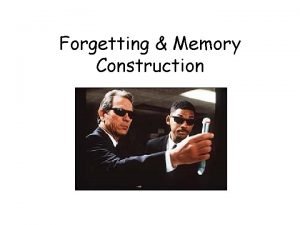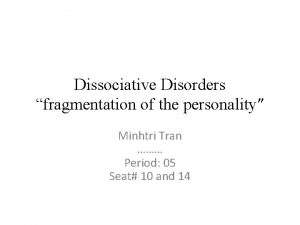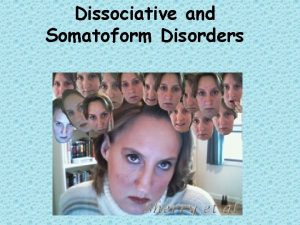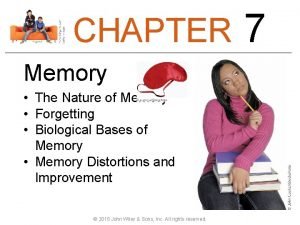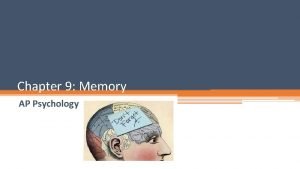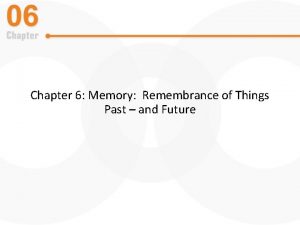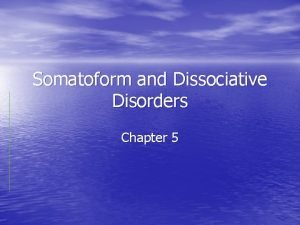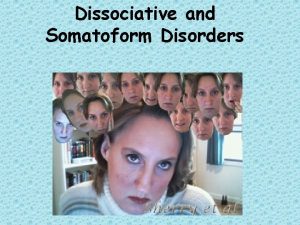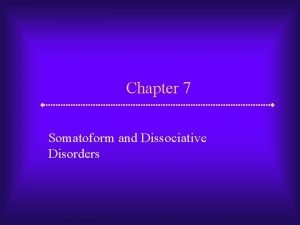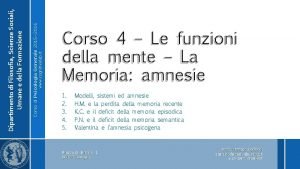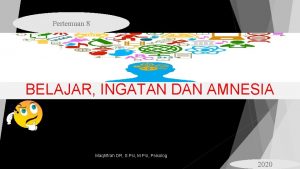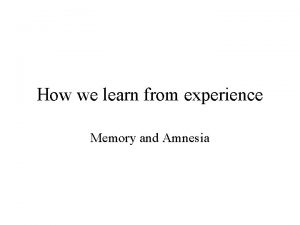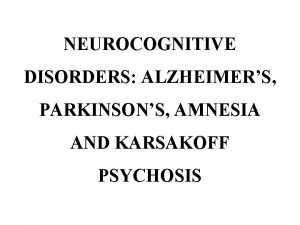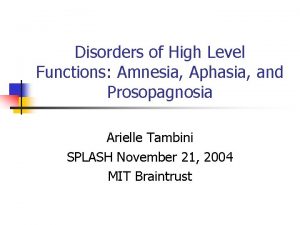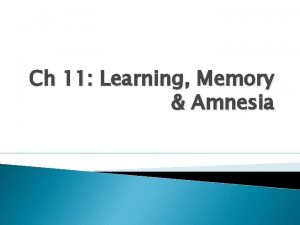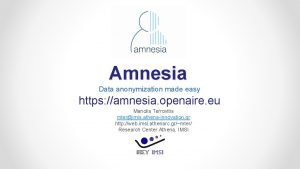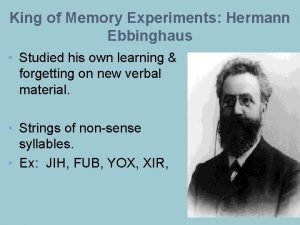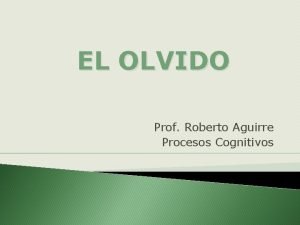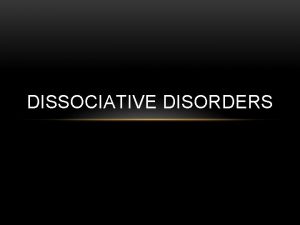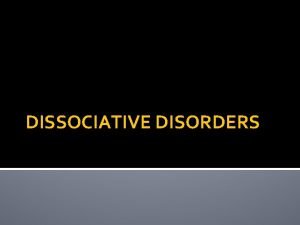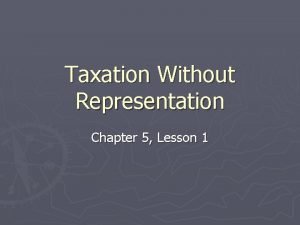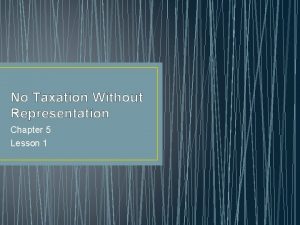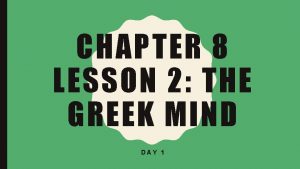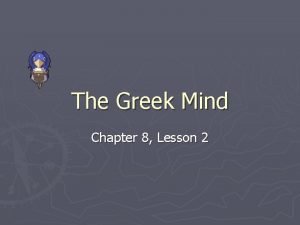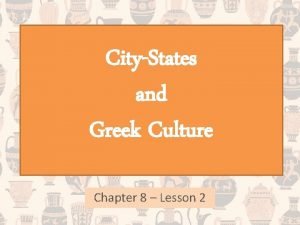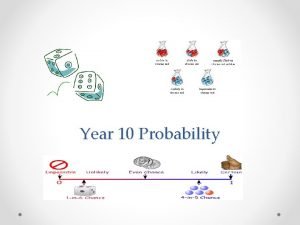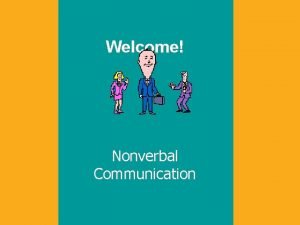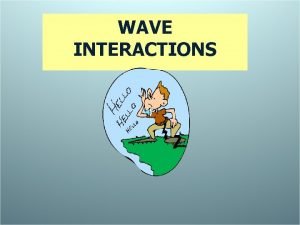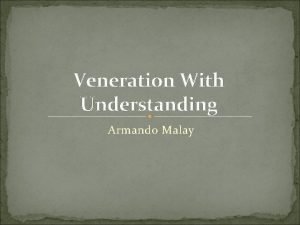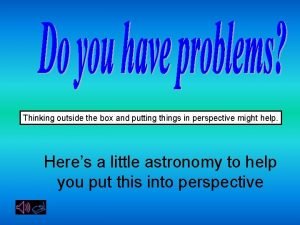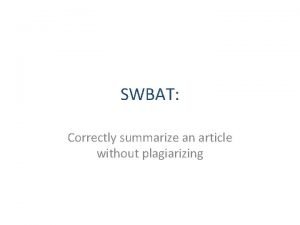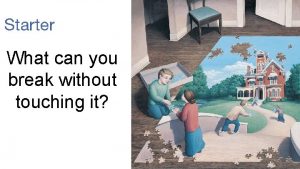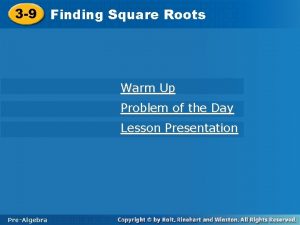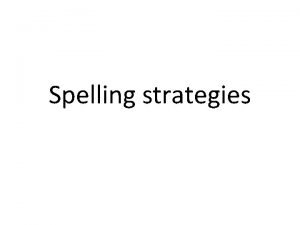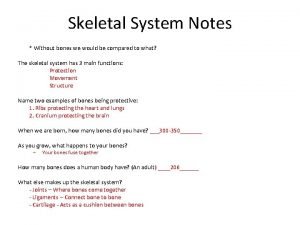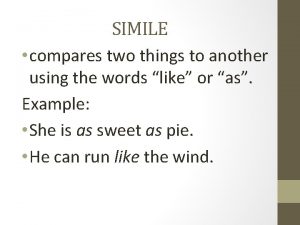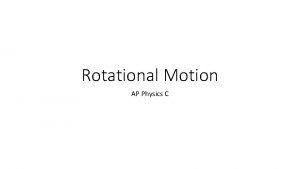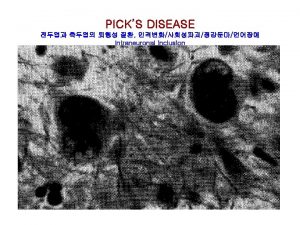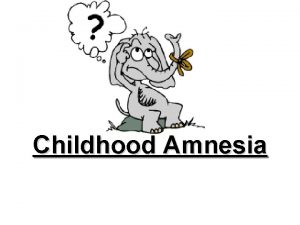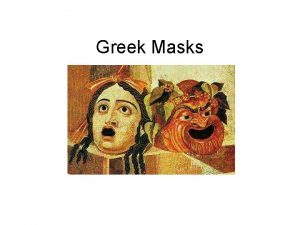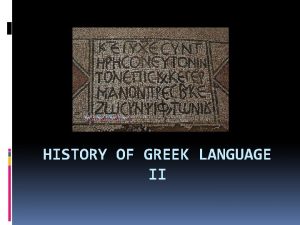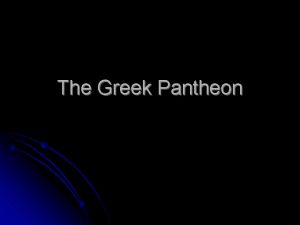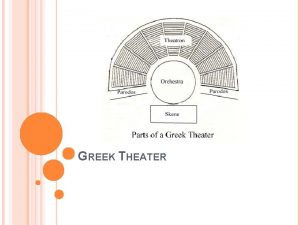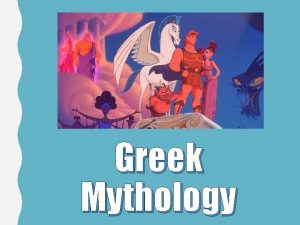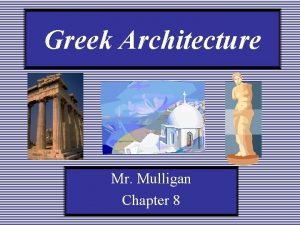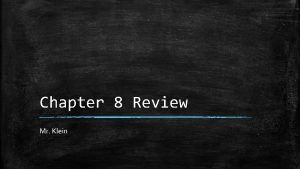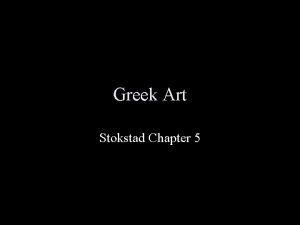Chapter 10 Amnesia Amnesia AMNESTIA from Greek Without


































































- Slides: 66

Chapter 10: Amnesia

Amnesia • AMNESTIA from Greek –> Without memory • Amnesia: Any impairment of memory abilities beyond normal forgetting • Selective Disruption of the Processes underlying LTM

Case Studies of Amnesia • Clive Wearing (1938 -) – Prominent British composer, conductor, and performer. – Brain damage due to viral encephalitis, damaging medial temporal lobes and prefrontal lobes. – Global amnesia: Complete anterograde and retrograde amnesia.

Case Studies of Amnesia • HM: bilateral removal of hippocampuses and surrounding medial temporal lobe in order to alleviate epilepsy. – Semantic memory, language abilities, IQ, implicit memory all remained intact. – No retrograde amnesia – Complete anterograde amnesia – Was studied by researchers since his surgery in 1953 until his death in 2008.

Types of Amnesia • Anterograde: Inability to form new memories following brain damage –Problem encoding, storing or retrieving information that can be used in the future. –Capacity for new learning greatly impaired –Typically, ability to recall past events intact. • Retrograde Amnesia: Loss of access to events that happened in the past, before the onset of the disease.

Types of Amnesia www. psy. fsu. edu/faculty/glendenning/13 amnesia. ppt

Anterograde Amnesia • Damaged Brain Areas: – Hippocampus – Medial temporal lobes. • A second locus in the brain causing Amnesic syndrome – Mammillary bodies of the diencephalon. – Damage to the adjacent fornix can also induce anterograde amnesia (Aggleton, 2008). Medial temporal lobe structures: hippocampus, hippocampal region consisting of the perirhinal, parahippocampal, and entorhinal neocortical regions



The Amnesic Syndrome • Symptoms of the Amnesic syndrome: – Anterograde amnesia for both episodic and semantic memory – Intact working memory – Intact language and intelligence – Intact implicit memory – Damage to hippocampus and surrounding medial temporal lobe

Implicit Memory in the Amnesic Syndrome • Implicit memory: Preserved ability to perform tasks that are influenced by a past event without the person being aware of the event experience. • Repetition priming studies show that a prior experience with a word will make it easier to later solve a word fragment completion task later.

Implicit Memory in the Amnesic Syndrome • Word fragment completion task – Study: basketball • Recall the word: Amnesiacs will fail) – Word fragment completion. • b - - s-e-b- -l • Amnesiacs show equivalent priming as normals

DEMO STUDY WORDS BY SAYING THEM ALOUD

PICTURE

MOTION

COMMERCE

WINDOW

VESSEL

VILLAGE

REINDEER

CUSTOM

AMOUNT

FELLOW

ADVICE

DOZEN

FLOWER

KITCHEN

BOOKSTORE

COMPLETE THE FOLLOWING WORD FRAGMENTS

P_C_UR_

M_T_O_

D_SK

W_N_O_

V_SS_L

V_L_A_E

C_R_ET

C_ST_M

H_N_

F_NG_R

A_VI_E

D_ZE_

FL_U_

KI_C_EN

B__KST_R_

Word-Completion Task Study Words: Picture Commerce Motion Village Vessel Window Number Reindeer Custom Amount Fellow Advice Dozen Flower Kitchen Bookstore Complete Word Fragments M_t_o_ V_l_a_e V_s_e_ P_a_t_c M_n_a_ N_t_b_o_ C_m_e_c A_v_c_ T_b_e_ F_o_e_ C_r_o_ H_m_w_r_ B_o_s_o_e 45

hci. ucsd. edu/101 b/Types-of-Memory. pdf

www. psy. jhu. edu/~stark/class/amnesia_slides. pdf 47

www. psy. jhu. edu/~stark/class/amnesia_slides. pdf 48

Anterograde Amnesia Baddeley & Warrington (1970; Dense Anterograde): Preserved intellect. Impaired capacity to learn (episodic). Preserved digit span. Showed normal recency effects. Recall of “EARLY info” Greatly impaired. Performed normally in the Brown-Peterson STM. Patients showed “release from proactive interference.

Immediate free recall in amnesic and control patients. Amnesic patients show preserved recency and impaired recall of earlier items. From Baddeley and Warrington (1970). Copyright © Elsevier. Reproduced with permission.

Amnesic Syndrome • Patients are aware of their deficit. This is helpful clinically. • Can be trained to use memory aids. • Can use a variety of compensatory methods.

Assessing Anterograde Amnesia • How to asses Anterograde Amnesia? • Learn list of words: • Free Recall or Recognition

Retrograde Amnesia • Retrograde amnesia: Inability to retrieve memories of events prior to brain damage. • Ribot’s law: Newer memories will be more affected by retrograde amnesia than older memories. • Consolidation: A neurological process whereby memory traces are made permanent in a person’s long-term memory.

Patient KC • KC a college-educated: • Living near the city of Toronto, In 1981 at the age of 30, suffered a major head trauma in single-vehicle motorcycle crash • Destroyed large amounts of brain tissue in his frontal and temporal lobes, including extensive damage to his left hippocampus. • Deep Retrograde and anterograe Amnesia – No episodic memory, no memories of past, and cannot encode new information – Semantic (knows how to change a tire), lexical intact

Retrograde Amnesia www. lifesci. sussex. ac. uk/home/Sam_Hutton/Memory 3. ppt Amnesics also have deficits on “famous faces” test Controls Amnesic patients Although intuitively plausible, episodic / semantic distinction not well supported by evidence. Episodic and semantic memories clearly differ in content but may be different expression of same underlying LTM system. 56

Retrograde Amnesia in Epilepsy • A less severe form of retrograde amnesia: – In patients with temporal-lobe epilepsy. – The focal point of the brain damage that causes epilepsy is often the temporal lobe. – These patients will often demonstrate retrograde amnesia. The more frequent the seizures, the more retrograde amnesia seen (Bergen et al, 2000).

Electroconvulsive Therapy (ECT) • ECT induces retrograde amnesia. • But not anterograde amnesia • May be significant retrograde amnesia (up to a year) • Wears off over time except for small window around ECT

Assessing Retrograde Amnesia Scales: -Past Events: News events, TV shows (BUT not everyone into news/ TV shows) -Autobiographical: Ask about memories & check with spouses. Using the CUE WORD TECHNIQUE (LOVE) (Cue word method might produces too much material) -Autobiographical Memory Interview (Kopelman et al. , 1990): -Asks to remember specific information about a range of time periods. Remote: First school, Intermediate: jobs, & Recent: Christmas (~ Personal Semantic Memory) -Asks to recollect a specific personal event for each time period (e. g. , In high school, I remember winning a race).

How to Asses Retrograde Amnesia -Autobiographical Memory: Do you remember your wedding? Themes about your school -Semantic Memory: Ask about different categories Furniture: Chair and bed furniture? Cows, cats, and goats are? Ask about TV or music programs for a particular time period.

Other General Characteristics of the Amnesic Syndrome Reading Speed is normal (Squire, 1995): but can’t remember what they read STM or working memory (Baddeley, 1998): May be intact Show recency in free recall; Peterson & Peterson task Excellent! LTM: Difficulty in new episodic learning: Patient K. J. (Baddeley & Wilson, 1988) Repeated information immediately excellent But difficulty recognizing new therapists or learn new names

Other General Characteristics of the Amnesic Syndrome Semantic Memory: Usually Intact Based on their knowledge of vocabulary Understand meaning of words Can use language correctly Have problems with Sentence Verification Task Birds have feathers? T or F Problems with this task? (WHY) IMPLICIT ENOUGH?

Impairments of Specialized Memory Functions Prosopagnosia (Damasio et al. , 1990) Patients cannot recognize faces (e. g. , woman unable to recognize husband, daughters and own face!): Could recognize voices Visual vs. Auditory routes to memory? Dual rotes to memory retrieval Semantic memory can be accessed vial visual or auditory route

Semantic Memory Deficits Forgetting the words or concepts! Funnel (1995) asked Mrs. P a retired math teacher: Funnel: What is a kitten? Mrs. P: What on earth is a kitten? Funnel: Does a mouse have a beak? Mrs. P: If I knew what a beak was, I could tell you. BUT MAY BE USING IMPLICIT TASKS?

Semantic Memory Deficits Cont. Clive Wearing (Wilson & Wearing, 1995) Problem distinguishing between HONEY, JAM, MARMALADE Clive Wearing ate lemon including the peel mistakenly for another fruit These evidence support the view that memories are stored throughout the brain as a network Collins & Loftus (1975) network model Damage to one NODE will eliminate that concept

Semantic Network Models www. psych. utah. edu/2006_spring_3120_001/lectures/Chapter 8. ppt

Theoretical Implications? Findings from Amnesia: Support theoretical distinctions between STM & LTM Distinction between Episodic and Semantic, Implicit memory?
 What is the theme of without title
What is the theme of without title Poem without title
Poem without title Why does pablo neruda urge to keep quiet
Why does pablo neruda urge to keep quiet What is the greek miracle in greek mythology
What is the greek miracle in greek mythology Retrograde amnesia
Retrograde amnesia Amnesia
Amnesia Types of retrograde amnesia
Types of retrograde amnesia Source amnesia
Source amnesia Hm study
Hm study Anterograde amnesia
Anterograde amnesia Anterograde amnesia
Anterograde amnesia Retroactive interference
Retroactive interference Anterograde and retrograde amnesia
Anterograde and retrograde amnesia Source amnesia
Source amnesia Fugue dissociative
Fugue dissociative Disassociative amnesia
Disassociative amnesia Source amnesia
Source amnesia Encoding failure ap psychology
Encoding failure ap psychology Anterograde vs retrograde amnesia
Anterograde vs retrograde amnesia Amnesia data anonymization
Amnesia data anonymization Dissociative disorder
Dissociative disorder Dissociative amnesia
Dissociative amnesia Dissociative amnesia
Dissociative amnesia Cognitivelab
Cognitivelab Amnesia lobus temporal medial
Amnesia lobus temporal medial Amnesia
Amnesia Types of amnesia
Types of amnesia Amnesia abuso infantil
Amnesia abuso infantil Arielle tambini
Arielle tambini Amnesia
Amnesia Amnesia data anonymization
Amnesia data anonymization Source amnesia
Source amnesia Amnesia types
Amnesia types Amnesia proactiva
Amnesia proactiva Dissociative fugue
Dissociative fugue Dissociative
Dissociative Chapter 38 a world without borders outline
Chapter 38 a world without borders outline Chapter 40 a world without borders
Chapter 40 a world without borders Chapter 5 lesson 1 no taxation without representation
Chapter 5 lesson 1 no taxation without representation Lesson 1 no taxation without representation
Lesson 1 no taxation without representation Chapter 8 lesson 1 greek culture
Chapter 8 lesson 1 greek culture Greek teachers of philosophy reasoning and public speaking
Greek teachers of philosophy reasoning and public speaking Chapter 8 lesson 2 the greek mind
Chapter 8 lesson 2 the greek mind Chapter 4 lesson 2 the greek city states
Chapter 4 lesson 2 the greek city states Zeal without knowledge
Zeal without knowledge Without replacement probability
Without replacement probability Yashpal committee report on higher education
Yashpal committee report on higher education Prepare thy work without
Prepare thy work without Without sanctuary
Without sanctuary Something you never leave home without
Something you never leave home without Means communication without words. *
Means communication without words. * Waves transfer energy without transferring matter
Waves transfer energy without transferring matter Armando malay
Armando malay A place without shame by david baraza
A place without shame by david baraza Training is expensive without training it is more expensive
Training is expensive without training it is more expensive Earth without clouds
Earth without clouds Melchizedek without father or mother
Melchizedek without father or mother Apa conclusion example
Apa conclusion example How to summarize without plagiarizing
How to summarize without plagiarizing You can break it without touching it
You can break it without touching it Dream without action is hallucination
Dream without action is hallucination How to find a square root without a calculator
How to find a square root without a calculator Guess word from pictures
Guess word from pictures Without bones we would be
Without bones we would be A comparison between two things using like or as
A comparison between two things using like or as A man without self control proverbs
A man without self control proverbs Ap physics c rotational motion
Ap physics c rotational motion



